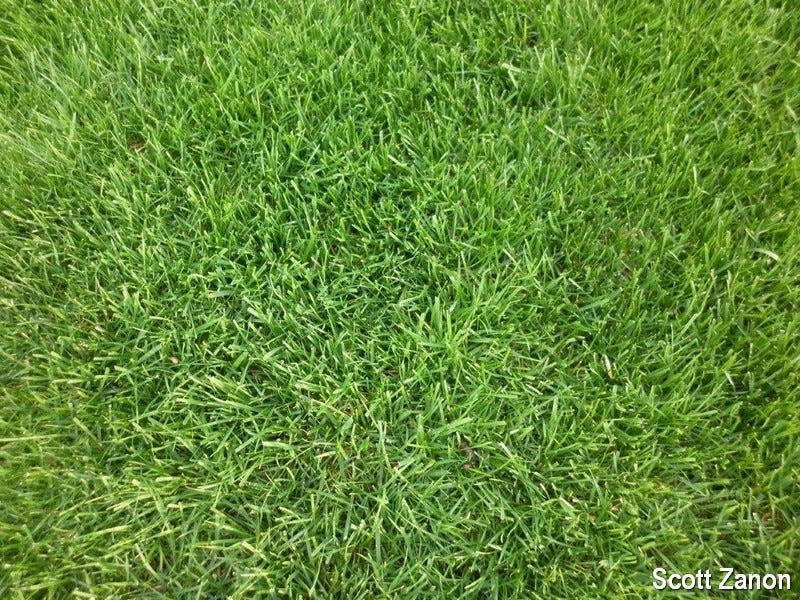Tips to help your NJ lawn look its best | Gardener State
A healthy lawn prevents pollution from soil erosion and provides an enjoyable and pleasant setting for your home landscape.
Turfgrass or native alternative lawns provide a ground cover that is adapted to many site conditions, helps with soil stabilization and contributes to water retention and filtration. These sustainable lawncare tips will help your landscape look its best, while conserving important natural resources.
In New Jersey, we primarily grow cool season grasses. Cool season grasses will put on vigorous growth in the spring then slow down in the summer and resume growth later in the season when the nights start to cool down again. Some species do best in full sun, while others can tolerate more shade. Some species of turfgrass require more fertilizer and water than others. You may also be interested in using native plants as an alternative groundcover. It all comes down to matching the right plants for the right location and what your goals are for your landscape. It is important to note that any new seedings will be most successful if the grass is planted in the fall for the following season.
Before applying any fertilizer, it is important to take a soil fertility test. A soil test will let you know how much fertilizer to apply and what kind of nutrients you should be adding. Adding too much or too little of any nutrient can have negative impacts on the turf and excess fertilizer can get into our waterways and contaminate the environment.
Mowing should be done at a height of 2½-3½ inches, particularly during the summer. Continuous mowing at 2 inches or lower tends to weaken the turf and increase pest and other stress problems. Keep the mower blades sharp and properly adjusted because a dull blade shreds the grass leaves, weakens the turf and turns the leaf tips brown. Returning clippings to the lawn will recycle nutrients to the soil and grass and reduce waste. Mulching mowers facilitate this by chopping the clippings into smaller pieces.
More: Everything to know about New Jersey native trees | Gardener State
Turf needs 1-1 1/2 inches water per week, which can come from a combination of rainfall and irrigation. Deep infrequent irrigation is much better for the plants than providing them with a little bit of water every day. Watering should be done in the morning because this conserves water by reducing evaporation that would take place in mid-day heat. Watering in the morning also helps to reduce disease problems because the leaves will be able to dry throughout the day, instead of remaining wet overnight, which creates an ideal environment for pathogens.
Kentucky bluegrass (poa pratensis) is a popular cool season grass because it can form a high-quality home lawn. It produces underground stems called rhizomes that can spread and help to hold the turf together. Kentucky bluegrass is tolerant to cold, wear, heat and drought stress, but it can be slow to germinate and establish. It requires full sun and well-drained soil and does best with supplemental irrigation and fertility additions.

Tall fescue (festuca arundinacea) is a durable turfgrass species that requires less water and fertilizer than Kentucky bluegrass. It has a strong root system that allows it to access water from deep within the soil. Tall fescue is heat and drought tolerant and requires well drained soils to thrive.
Fine fescues (festuca spp.) are another group of cool season turfgrasses that include creeping red fescues, chewings fescue and hard fescue. The fine fescues are compatible in mixtures with other species and are generally regarded as a lower maintenance turf. They tolerate low fertility, low pH, drought and shade. However, they are not adapted for heat stress, poor drainage, high traffic areas, or high nitrogen fertility.
Perennial ryegrass (lolium perenne) is a fine textured bunch-type turfgrass that establishes quickly from seed. It has good color and moderate shade tolerance, but it can be susceptible to heat and drought stress. Perennial ryegrass can work well in a mixture because it will grow quickly, while other slower grasses take their time to fill in and develop.
White clover (trifolium repens) can be a welcome addition to any lawn. Clovers can be mixed with turfgrasses and are drought tolerant. They produce flowers that are good for the pollinators, and they can fix nitrogen, which helps to improve soil fertility.
Appalachian sedge (carex appalachica) and Pennsylvania sedge (carex pennsylvanica) are two native plants that can be used as alternative lawns or groundcovers. They form clumps of green grass-like foliage that can grow up to 12 inches tall. They both require well-drained soil, but also have low fertility requirements and are deer resistant.
For more information, be sure to check out the Lawn and Landscape page of the Rutgers Home, Lawn, and Garden website at njaes.rutgers.edu/home-lawn-garden/lawns-landscapes.php
William Errickson is the Agriculture and Natural Resources Agent for Rutgers Cooperative Extension of Monmouth County.
This article originally appeared on MyCentralJersey.com: NJ lawn tips for good grass growing

